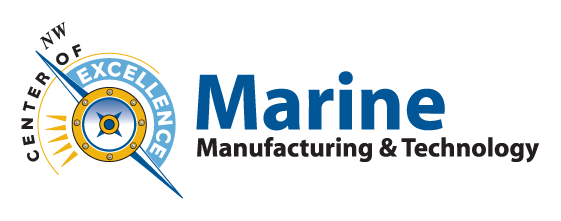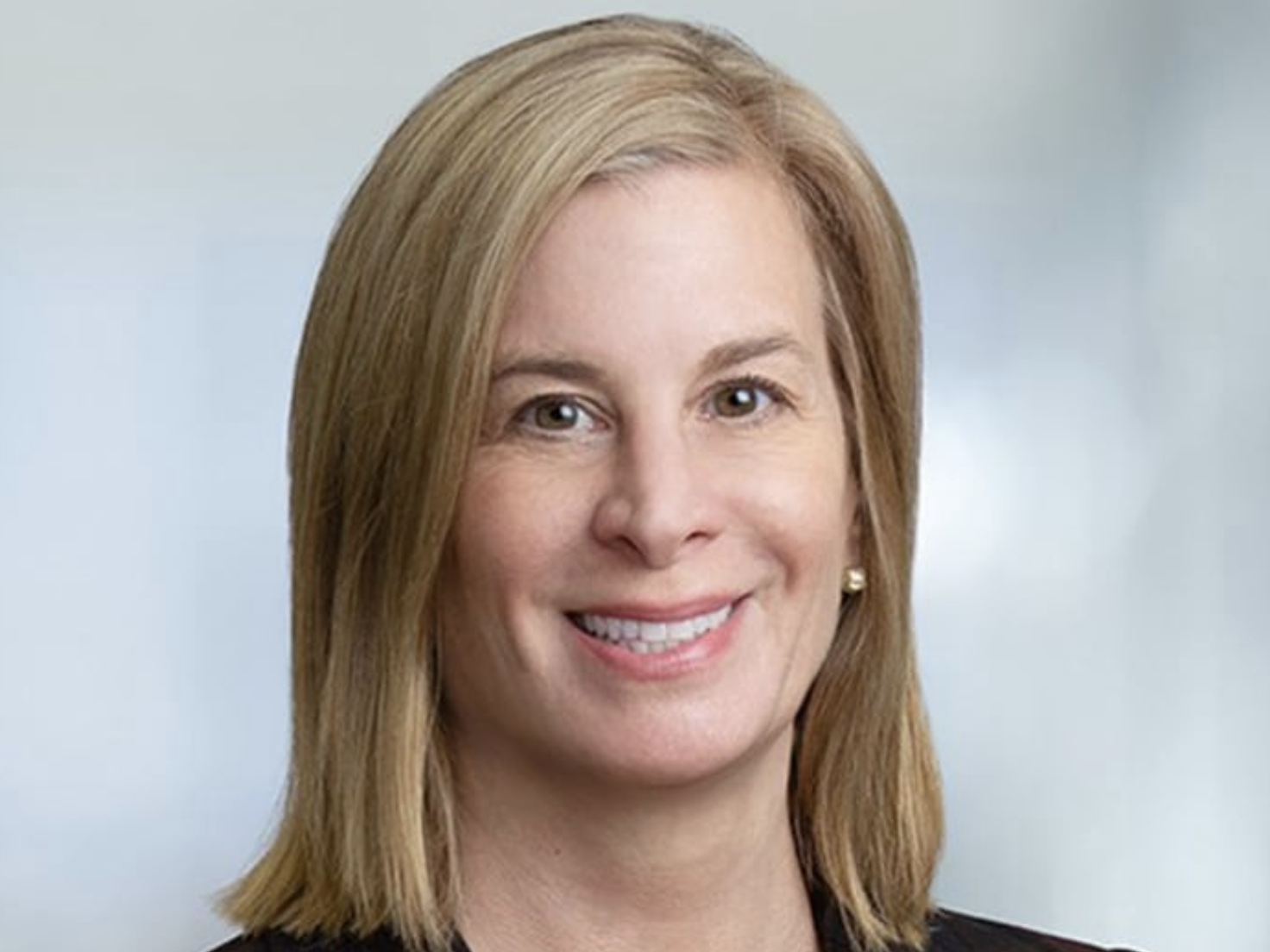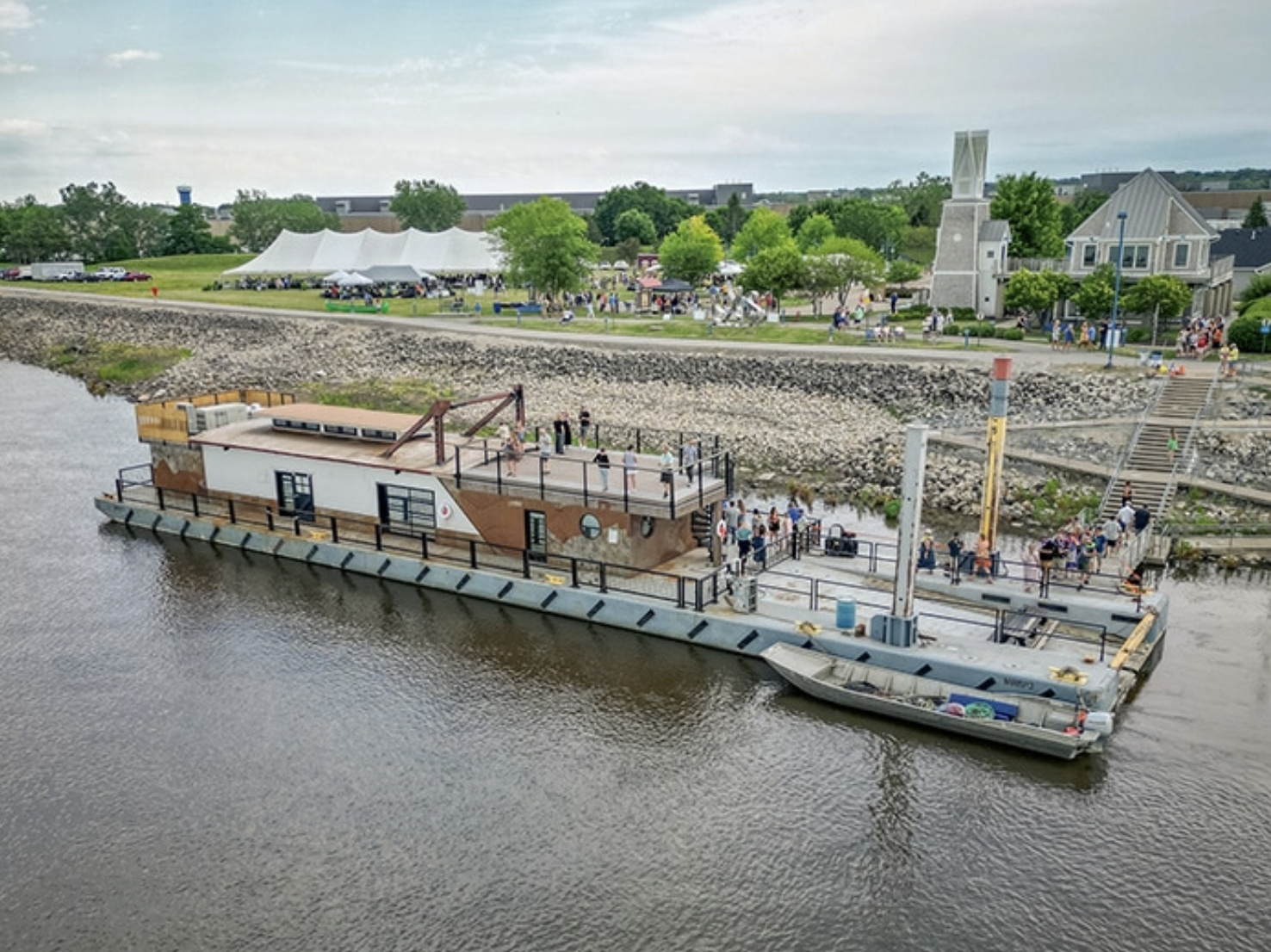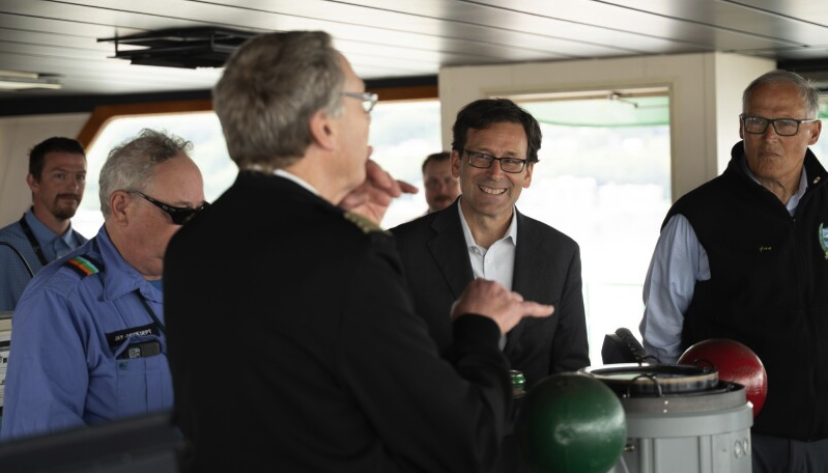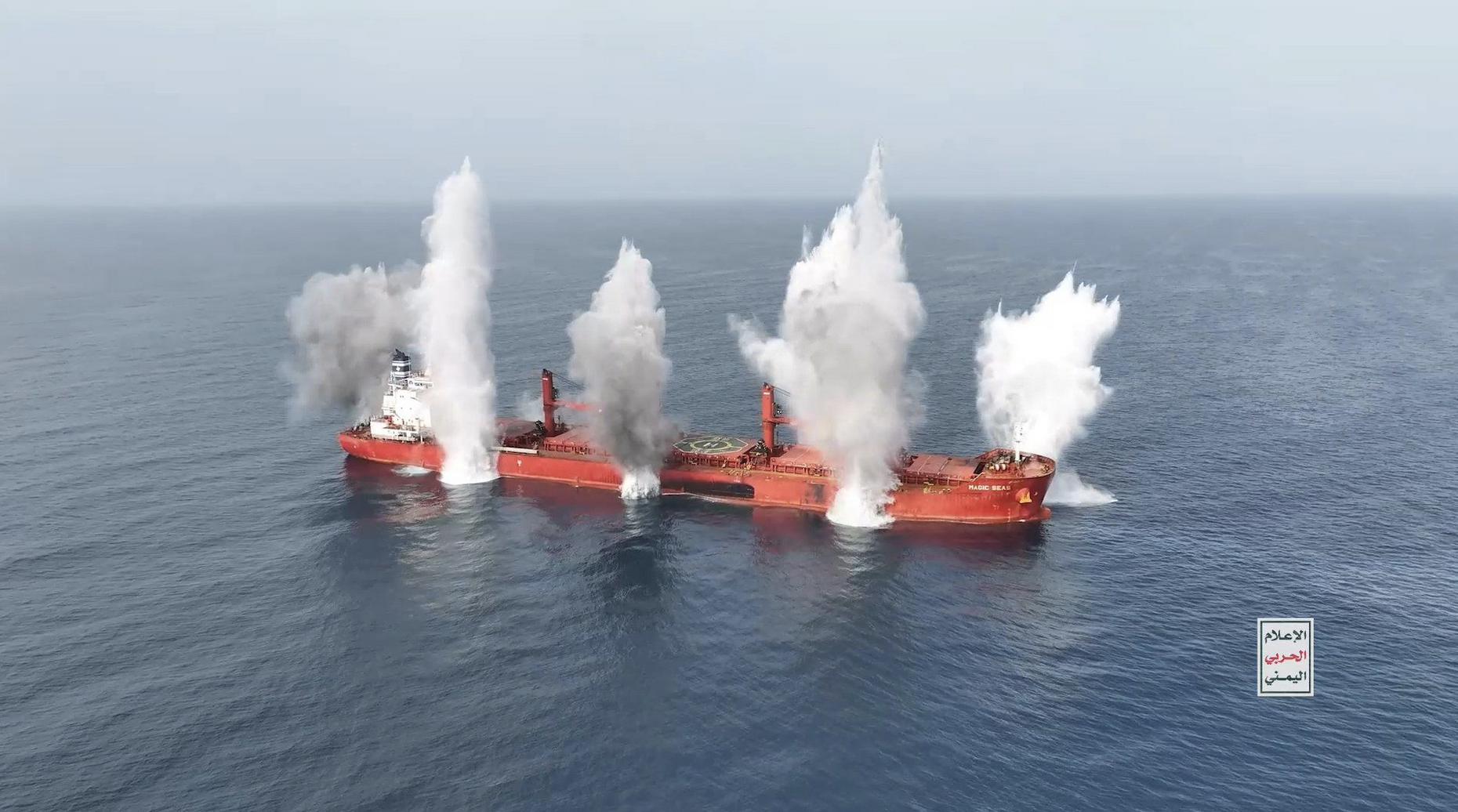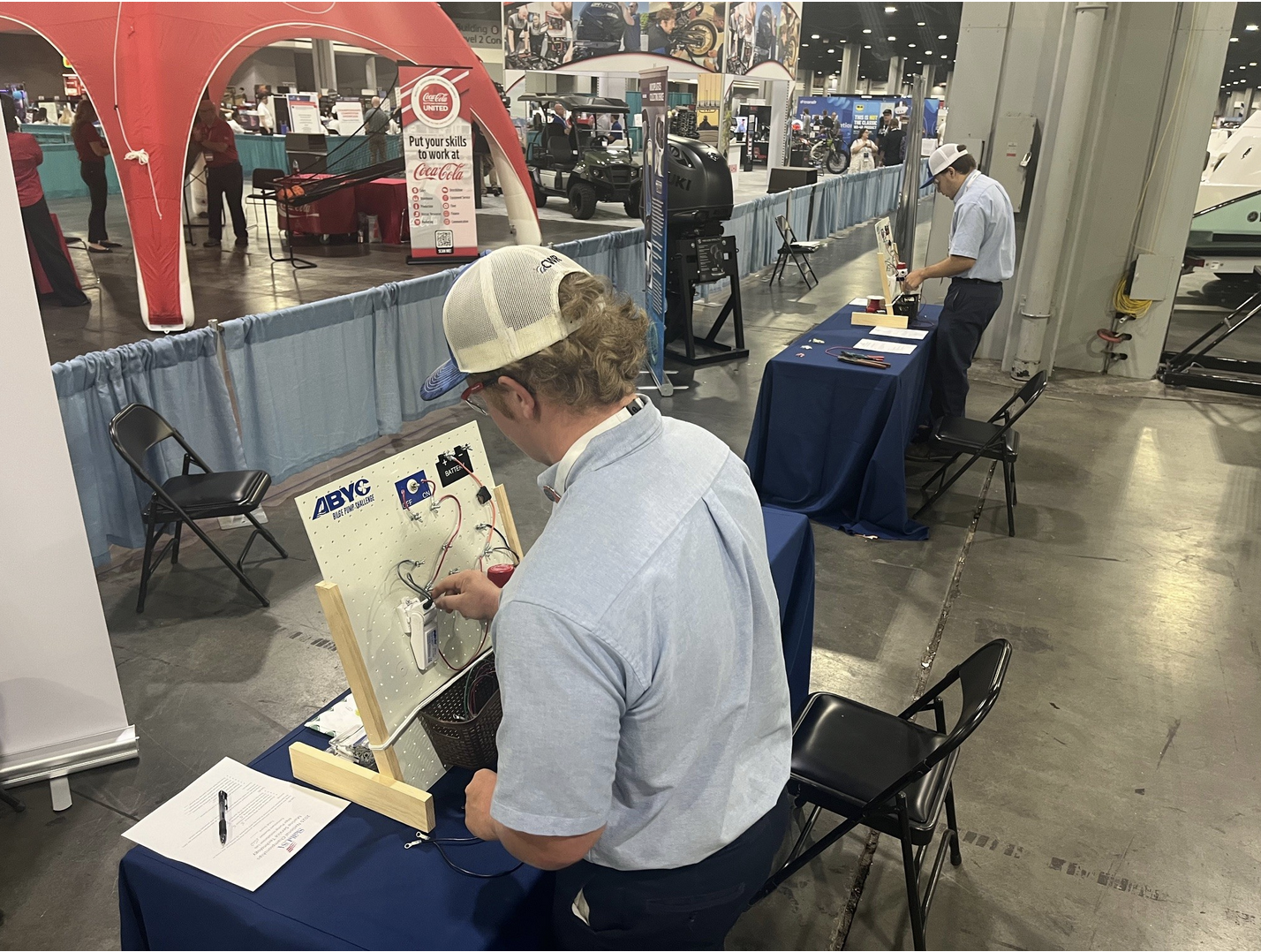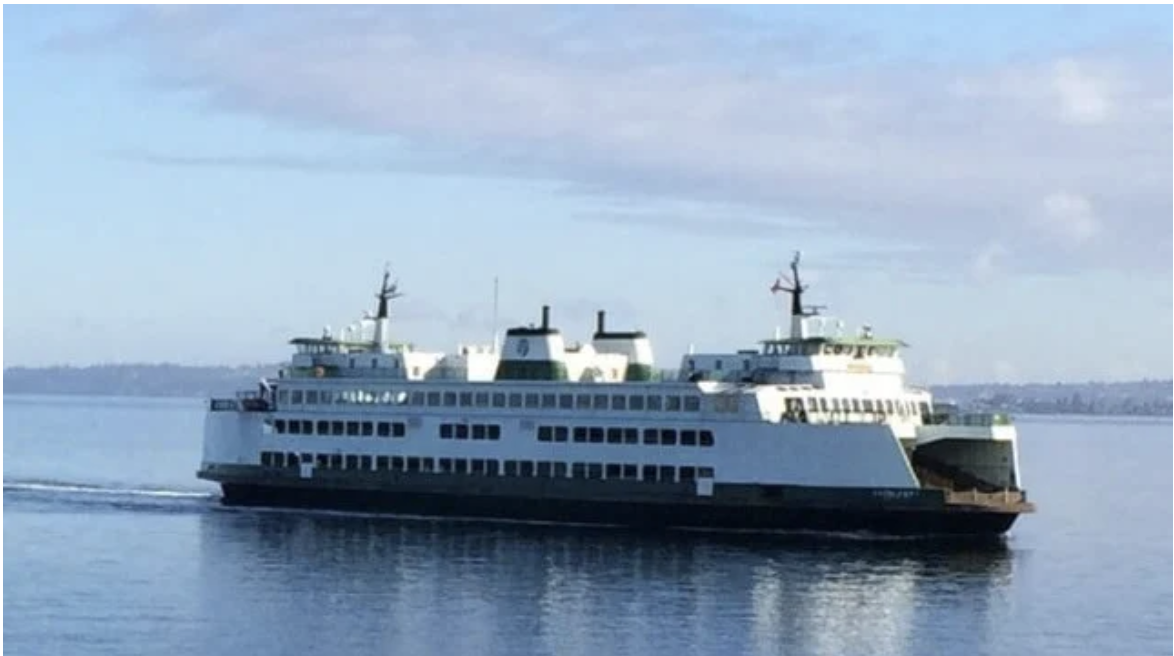Wavebreaker Blog
Welcome to the Wavebreaker Blog. Whether you are an experienced maritime professional, new to the industry or just looking to learn more, the Wavebreaker Blog is a great place to get industry updates and information, perspective pieces and insights about the industry. We welcome your feedback too. If you’d like to write a post, let us know! Send us an email with your feedback or interest in writing to marine.coe@skagit.edu
Q&A: Navigating U.S. offshore energy’s legal maze
As part of our Career Connect Washington Maritime Sector ongoing work, we actively track, document, and inform about emerging technologies and trends. As the U.S. offshore energy landscape rapidly evolves—with growing momentum in offshore wind and heightened regulatory scrutiny in oil and gas—developers are facing a complex legal environment shaped by shifting policies, environmental challenges, and financial risks. Marine Log spoke with Jana Grauberger, a partner at Liskow & Lewis in Houston, to unpack the key legal and regulatory issues impacting federal offshore leasing, permitting, decommissioning, and compliance for both traditional and renewable energy sectors.
USCG designates new WWCs as the “Chief Petty Officer Class”
As part of our Career Connect Washington Maritime Sector ongoing work, we actively track, document, and inform about emerging technologies and trends. The U.S. Coast Guard is to designate its new fleet of Waterways Commerce Cutters (WCCs) as the “Chief Petty Officer Class.” Each cutter will be named in honor of a Coast Guard Chief Petty Officer, recognizing the profound impact and legacy of these leaders within the service. The new cutters will replace the Coast Guard’s aging river tender fleet, facilitating the safe, secure and reliable flow of commerce throughout the national Marine Transportation System (MTS). With America’s MTS supporting $5.4 trillion of economic activity, the WCCs will maintain aids to navigation that enable safe movement of food, energy, consumer goods, and raw materials between producers and consumers. Through their stewardship of the MTS, including vital system of aids to navigation, the WCC fleet will play a critical role in advancing America’s economic security and protecting vital ports and waterways.
Boat Bonding on the Bering Sea
As part of our Career Connect Washington Maritime Sector ongoing work, we actively track, document, and inform about emerging technologies and trends. The Anacortes-based crew of the custom Perry-designed 48-foot sailboat, One Ocean, is now several months into their expedition to circumnavigate the “One Island” of North and South America. They are led by Captain Mark Schrader and Project Director (and author of this article) Jennifer Dalton. All along the way, the voyage balances research and education—with several scientists aboard who are working with professional researchers ashore to gather data that helps better illuminate ocean health and challenges. The crew then actively shares this info as well as stories of their adventures, connecting and educating communities and students far and wide. What follows is an excellent sea story about their passage across the Bering Sea enroute to the Northwest passage.
Floating classroom connects students to river careers
As part of our Career Connect Washington Maritime Sector ongoing work, we actively track, document, and inform about emerging technologies and trends. With its floating classroom barge and hands-on workshops, the Mississippi River Institute is connecting young adults and school-aged kids to the river’s ecological and economic importance, while opening their eyes to careers they may have never considered. From towboat captains and deckhands to fisheries biologists and hydrologists, the program immerses students in the working river, guided by industry professionals who share their own stories, skills, and career paths. In this Q&A, Marine Log talks with Rachel Loomis, Mississippi River Institute manager and educator, about how the institute is inspiring the next generation to see the Mississippi River as “2,300 miles of opportunity.”
Top Women in Maritime 2025 winners announced
As part of our Career Connect Washington Maritime Sector ongoing work, we actively track, document, and inform about emerging technologies and trends. Marine Log is proud to announce the winners of its 2025 Top Women in Maritime Awards, recognizing 20 exceptional leaders whose achievements are shaping the future of the maritime industry.
This year’s honorees represent a wide range of expertise, from vessel operations and naval architecture to port leadership and education.
It’s time to prepare for autonomy
As part of our Career Connect Washington Maritime Sector ongoing work, we actively track, document, and inform about emerging technologies and trends. The U.S. Navy is mulling a dramatic — if not unprecedented — build-up of autonomous platforms. It is great to see the Navy consider sailing high-tech robotic warships alongside conventional warships, but these visions must come with a caution. Unless the Navy starts experimenting at scale soon, the U.S. waterfront will be unready to accommodate wide-ranging fleets of autonomous watercraft. Without operational preparation, port stakeholders at the state, local, and federal levels will put this new fleet at risk. Right now, as Pentagon bureaucrats trade PowerPoint slides, a fleet of armed, 150' autonomous surface vessels (ASV) looks like a massive manufacturing “win” for hungry shipbuilders. It is a great vision, but, once these robots start showing up, needing maintenance — or even just basic things like, say, mooring spots — this enormous shipbuilding initiative will collapse.
Trump Administration Announces $8.75 Million in Small Shipyard Grants, Continuing Funding Decline
As part of our Career Connect Washington Maritime Sector ongoing work, we actively track, document, and inform about emerging technologies and trends. The U.S. Maritime Administration (MARAD) has awarded $8.75 million in grants to support 17 small shipyards across 12 states, Transportation Secretary Sean P. Duffy announced today. The funding, part of the Small Shipyard Grant program, aims to revitalize U.S. shipyards and strengthen America’s maritime capabilities. This year’s allocation matches the 2024 amount, marking the lowest funding levels since 2016. The program saw significantly higher investment in recent years, with funding peaking at approximately $20-21 million in both 2022 and 2023.
Louisiana Gateway Port releases economic impact report
As part of our Career Connect Washington Maritime Sector ongoing work, we actively track, document, and inform about emerging technologies and trends. The Louisiana Gateway Port (LGP), in Plaquemines Parish, La.,has released its report, “Economic Impacts of the Louisiana Gateway Port Tenants on the Regional and State Economies.” The comprehensive analysis highlights LGP’s significant contributions to economic output, job creation, and global trade connectivity. Known as the Plaquemines Port and Harbor District until its rebranding under its current name in March this year, the Louisiana Gateway Port is located on the first 81 miles of the Mississippi River where the river meets the Gulf.
Washington State Ferries goes to Florida
As part of our Career Connect Washington Maritime Sector ongoing work, we actively track, document, and inform about emerging technologies and trends. The decision has been made: Washington State Ferries is going to Florida for new boats. Earlier this month, Eastern Shipbuilding Group in Panama City was selected over Nichols Brothers Boat Builders in Freeland, Wash., in a bidding competition. This will be the first time in about 50 years that an out-of-state yard will build new vessels for the state-run ferry service. The decision is a huge disappointment for NBBB, which had been lobbying for at least a split decision: two boats for Florida, two boats for Washington. But no, not only does Florida get the work, we Salish Sea ferry riders now only get three new boats. WTF?
WinGD X-DF-A in ammonia-fueled engine world first
As part of our Career Connect Washington Maritime Sector ongoing work, we actively track, document, and inform about emerging technologies and trends. Taking ammonia engines into a shipbuilding reality, CSSC’s Swiss-headquartered WinGD subsidiary has become the first engine designer to have an ammonia-fueled two-stroke marine engine delivered and installed. The X52DF-A engine in question has now been installed in a 46,000 cubic meter LPG/ammonia carrier being built for EXMAR. The vessel will be the first ammonia-fueled gas carrier in service, and the engine among the first of WinGD’s ammonia-fueled X-DF-A design to enter commercial operation.
Maritime Industry Condemns Deadly Red Sea Attacks
As part of our Career Connect Washington Maritime Sector ongoing work, we actively track, document, and inform about emerging technologies and trends. Major shipping organizations have issued a joint statement condemning the recent attacks on vessels in the Red Sea that have resulted in seafarer fatalities and renewed security concerns in the region. The joint industry statement from the International Chamber of Shipping (ICS), BIMCO, European Shipowners | ECSA, INTERCARGO and INTERTANKO highlighted the “callous disregard for the lives of innocent civilian seafarers” after two ships were attacked and later sunk this week.
BlueForge and Palantir to Create "Warp Speed for Warships" With AI
As part of our Career Connect Washington Maritime Sector ongoing work, we actively track, document, and inform about emerging technologies and trends. On Wednesday, the nonprofit BlueForge Alliance - a heavily-funded program intended to help revitalize Navy submarine construction - announced that it is now working with leading commercial AI firm Palantir Technologies on a program to accelerate "warship production, fleet readiness, and digital transformation." The idea is to use Palantir's existing Warp Speed operating system for manufacturers in order to better connect up shipbuilders, suppliers and other partners in the shipbuilding supply chain in a "digitally connected manufacturing ecosystem."
ABYC Participates in SkillsUSA Conference
As part of our Career Connect Washington Maritime Sector ongoing work, we actively track, document, and inform about emerging technologies and trends. The American Boat & Yacht Council yesterday announced that it participated in and judged the Marine Service Technology competition at the SkillsUSA National Leadership and Skills Conference in Atlanta, held June 23-27. Yamaha, Suzuki, Honda and the National Marine Electronics Association also participated. The annual conference recognizes the nation’s top career and technical education students, featuring more than 110 competitions and more than 10,000 participants. In addition to marine technology, the event includes contests for welding, construction trades, manufacturing, transportation, health care, hospitality and more.
Eastern Shipbuilding Wins Contract to Build Hybrid-Electric Ferries for WSF
As part of our Career Connect Washington Maritime Sector ongoing work, we actively track, document, and inform about emerging technologies and trends. A milestone has been achieved in plans to modernize and restore service for Washington State Ferries (WSF) with Florida-based Eastern Shipbuilding being awarded a contract to build three passenger RoRo ferries. The state says the process was its first competitive bid for ferry construction in more than 25 years, and will further contribute to the efforts to bring service back to pre-pandemic levels. Washington Governor Bob Ferguson announced that after a year-long competitive bidding process that attracted interest from two shipyards, Eastern Shipbuilding has been selected to construct the three new 160-vehicle hybrid-electric ferries. The company won the contract after presenting the lowest bid, $714.5 million, which was six percent lower than WSF’s estimate, and significantly lower compared to its competitor, Washington-based Nichols Brothers Boat Builders.
Interview: ABS Group's Michael Devolld on Managing Cybersecurity
As part of our Career Connect Washington Maritime Sector ongoing work, we actively track, document, and inform about emerging technologies and trends. Just a decade ago, a ship simply dropped out of digital contact when it went over the horizon, and hackers had little if any access to its systems. With the advent of ubiquitous satellite broadband, that is changing quickly, and owners are getting used to a new reality: cyber criminals have discovered shipping. To learn more about the current threat picture and the steps that companies can take to protect their assets, TME spoke with Michael Devolld, Director of Cybersecurity at ABS Consulting.
Michael, could you start by telling us a little bit about yourself and your history with ABS? I've been with ABS Consulting for about a year now. Before that, I was with Royal Caribbean Group for about three years, helping to stand up their maritime cybersecurity program for their fleet. Prior to that, I had a 21-year career with the Coast Guard, ending with two years as Chief of Maritime Cyber Readiness at USCG Cyber Command.
U.S. Coast Guard Cutter Healy Departs Seattle for 2025 Arctic Deployment
As part of our Career Connect Washington Maritime Sector ongoing work, we actively track, document, and inform about emerging technologies and trends. The U.S. Coast Guard Cutter Healy is again underway for its annual mission to the Arctic as one of only two large icebreakers currently operational for the United States. She departed her homeport of Seattle, Washington, on June 19 for what the USCG reports will be a “months-long” deployment. The icebreaker, which was commissioned in 1999, provides the USCG’s primary presence each year in the Arctic. She completed her last deployment returning to Seattle on December 12, 2024, after a 73-day Arctic mission that included scientific research, search and rescue, and training exercises. Her 2024 deployment, however, was interrupted by an electrical fire in the engine room, which forced her to return to Seattle for repairs at the beginning of August.
Enhanced Safety Regulations Could Advance Maritime Electrification
As part of our Career Connect Washington Maritime Sector ongoing work, we actively track, document, and inform about emerging technologies and trends. The maritime industry is having to contend with an increasingly complex regulatory landscape. The introduction of FuelEU Maritime at the beginning of the year has, for the first time, established comprehensive regulations for phasing out the use of fossil fuels by vessels sailing in Europe. Additionally, the recent outcomes from MEPC 83 suggest a likely introduction of a new global carbon pricing mechanism for international shipping. Furthermore, shipping is quickly approaching its 2030 checkpoint – as outlined in the IMO’s revised GHG strategy in 2023 – by which time the industry must evidence a 20% reduction in carbon emissions, with the ambition to achieve 30% compared to its 2008 baseline. Combining this with the MEPC 83 outcomes, the industry is under significant pressure to demonstrate tangible reductions in carbon emissions from its operations.
Burned-Out Car Carrier Sinks in Pacific Three Weeks After Fire Began
As part of our Career Connect Washington Maritime Sector ongoing work, we actively track, document, and inform about emerging technologies and trends. Zodiac Maritime, managers of the car carrier Morning Midas, reports that it received information from the salvage team that the fire-damaged vessel sank in international waters. The fire had begun three weeks ago on one of the decks carrying electrical vehicles and grew quickly in intensity, forcing the crew to abandon ship. A salvage team from Resolve Marine took a week to reach the vessel because of its remote location approximately 360 nautical miles southwest of the Aleutians in Alaska. The vessel was reported to be still burning when teams reached it on June 9, but they believed the water integrity had been maintained. A towline was attacked on June 11, and by the time a second salvage vessel Garth Foss arrived on June 16, thermal scans and visual inspections showed no signs of an active fire onboard.
Washington State Ferries analyzing its options
As part of our Career Connect Washington Maritime Sector ongoing work, we actively track, document, and inform about emerging technologies and trends. I just realized that WSF is awfully close to WTF, which is what many Puget Sound ferry riders have said about Washington State Ferries’ service over the past several years. But, to be fair, service has improved, and state officials are promising a nearly full summer schedule of boats and crews. The Wenatchee, one of WSF’s largest boats, a Jumbo Mark II-class ferry, is expected to return to service after spending about two years in Vigor’s Seattle shipyard, where it has been converted from mechanical-diesel to hybrid diesel-battery propulsion. The Wenatchee was supposed to be completed in a year and to use about half the money allocated for two Jumbo conversions. However, the extra year also ate up all the budget and most of the available patience, so the plan now is to skip the second conversion and concentrate on getting five newbuild hybrid ferries ASAP. A final request for bids was sent out earlier this year.
The evolution of the female technician experience
As part of our Career Connect Washington Maritime Sector ongoing work, we actively track, document, and inform about emerging technologies and trends. The marine technician role is a hard job that requires technical knowledge, stamina, and the ability to problem solve. Being a female marine technician presents some additional challenges, from not having consistent access to a women’s restroom to being discredited because of gender. Has the situation improved over the last decade? Cindy Tufts, ABYC Master Technician at Town and Country Marine Services in the Virgin Islands, switched careers to join the marine industry after her youngest child started high school. “I was suffering burnout as a massage therapist when I started at IYRS School of Technology & Trades (Newport, Rhode Island) to become a marine technician, so I was excited to start my new career and take the first step in my new life dream,” said Tufts. She achieved her first ABYC Certification in 2012 and became an ABYC Master Technician in 2013.
